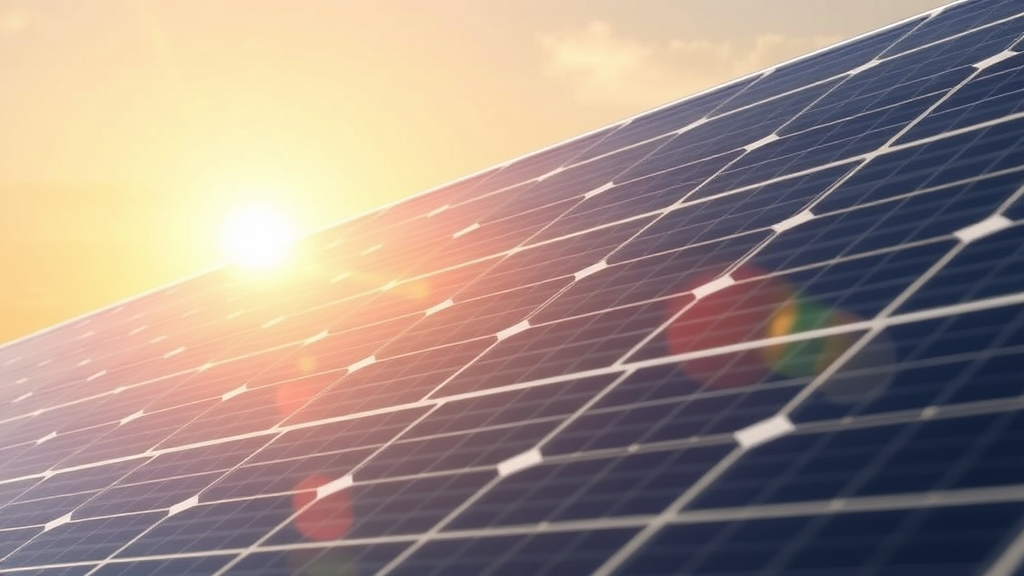Physical Address
304 North Cardinal St.
Dorchester Center, MA 02124
Physical Address
304 North Cardinal St.
Dorchester Center, MA 02124
Explore bifacial solar panels with this
comprehensive guide.

Solar energy technology continues to evolve, and bifacial solar panels represent a groundbreaking advancement in renewable energy generation. These innovative panels capture sunlight from both their front and back surfaces, significantly increasing energy production compared to traditional solar panels.
Bifacial solar panels are designed with transparent backing, allowing them to absorb reflected and direct sunlight. Unlike conventional solar panels that only capture light from one side, these panels can generate electricity from both surfaces. The rear side of the panel captures reflected light from the ground, surrounding surfaces, and atmospheric reflections, boosting overall energy output.
Bifacial solar panels offer remarkable performance benefits. Research indicates they can generate 10-30% more electricity compared to traditional monofacial panels. The additional energy production depends on several factors, including:
These panels perform exceptionally well in environments with:
| Parameter | Typical Performance |
|---|---|
| Additional Energy Yield | 10-30% |
| Typical Efficiency | 22-24% |
| Durability | 25-30 years |
Manufacturers typically construct bifacial panels using:
While bifacial solar panels have higher initial installation costs, their increased energy production provides substantial long-term economic benefits. The additional electricity generation can offset higher upfront investments within a few years.
Ideal deployment scenarios include:
For additional information, explore these authoritative resources:
Solar technology continues advancing rapidly, with bifacial panels representing a significant leap forward in renewable energy efficiency. As research progresses, these innovative panels are expected to play an increasingly important role in global sustainable energy strategies.
Solar technology continues to evolve, with bifacial solar panels emerging as a groundbreaking innovation in renewable energy generation. These advanced photovoltaic modules capture sunlight from both their front and rear surfaces, dramatically improving energy production efficiency compared to traditional single-sided solar panels.
Bifacial solar panels leverage a unique design that allows them to absorb solar radiation from multiple angles. Unlike conventional panels that only capture direct sunlight from the front side, these innovative modules can generate electricity by collecting reflected and diffused light from the rear surface. This dual-sided energy absorption can increase total power output by 10-30% depending on installation conditions.
The economic implications of bifacial solar technology are significant for both utility-scale and residential solar installations. Investors and energy developers can experience accelerated return on investment through:
Maximizing bifacial panel performance requires strategic deployment. Key considerations include:
| Performance Parameter | Single-Sided Panels | Bifacial Panels |
|---|---|---|
| Energy Yield Increase | Standard Output | 10-30% Additional Yield |
| Installation Flexibility | Limited | High Adaptability |
Bifacial solar technology contributes significantly to sustainable energy objectives. By generating more electricity per square meter, these panels reduce the total land area required for solar farms, minimizing environmental disruption while maximizing renewable energy production.
Leading manufacturers like SunPower and Canadian Solar are continuously improving bifacial panel designs. Recent innovations include enhanced transparent backsheets, improved cell interconnection techniques, and more robust light-capturing materials.
Market analysts predict substantial growth for bifacial solar technology. The global bifacial solar panel market is projected to experience a compound annual growth rate of over 15% in the coming decade, driven by decreasing production costs and increasing renewable energy adoption worldwide.
Despite remarkable advantages, bifacial solar panels face some implementation challenges. These include higher initial manufacturing costs, complex installation requirements, and the need for specialized mounting systems that maximize rear-side light capture.
Check out one of the top rated solar panel kits here – https://www.healthrefreshed.com/solar-panel-kits
As renewable energy transitions become increasingly critical, bifacial solar panels represent a transformative technology offering unprecedented efficiency and economic potential. Their ability to harness solar energy from multiple angles positions them as a key solution in the global shift towards sustainable power generation.
The future of solar energy looks brighter with bifacial solar panels revolutionizing renewable power generation. These innovative panels represent a significant leap forward in photovoltaic technology, offering substantial improvements over traditional solar solutions. By capturing sunlight from both sides, bifacial panels demonstrate a remarkable ability to increase energy production and overall system efficiency.
Investors and environmentally conscious consumers stand to benefit tremendously from this advanced technology. The economic advantages are clear: higher energy yields, reduced installation costs over time, and improved performance in diverse environmental conditions. Municipalities, commercial enterprises, and residential users can now leverage a solar solution that maximizes energy generation without proportionally increasing infrastructure expenses.
Technological advancements continue to make bifacial solar panels more accessible and cost-effective. As research progresses, we can anticipate even more sophisticated designs that further optimize light absorption and energy conversion. The potential for reducing carbon footprints while simultaneously providing economic benefits makes bifacial solar panels a compelling choice for sustainable energy strategies.
Ultimately, bifacial solar technology embodies the next generation of renewable energy solutions. Its ability to generate more electricity from the same footprint as traditional panels positions it as a game-changing innovation in the global transition toward clean, sustainable power generation. As climate challenges persist, technologies like bifacial solar panels offer a promising pathway to more efficient and environmentally responsible energy production.
For those committed to advancing renewable energy, exploring bifacial solar panels represents a forward-thinking approach to meeting growing energy demands while minimizing environmental impact. The convergence of technological innovation, economic efficiency, and environmental sustainability makes bifacial solar panels an increasingly attractive option for a wide range of energy applications.